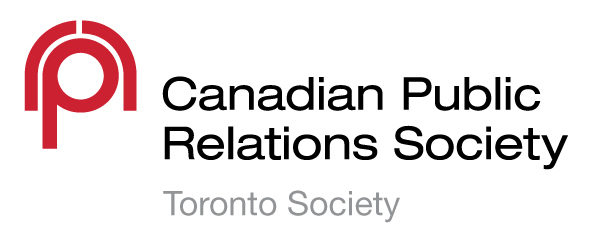Before you can dive in to an online influencer outreach program you obviously need to figure out who is influential and where they hang out online. Customers and potential customers read blogs and take part in discussions online every day, and online influencers are writing those blogs, and leading those conversations. If you can find out which blogs, and where these discussions are happening, you can begin to seek out, and build a list of online influencers. This can be done without purchasing third-party software such as Radian6 or Sysomos, though even with those programs some human analysis will be required for building accurate influencer lists.
For now, we will focus on finding potential online influencers and compiling a list.
Step 1 – identify keywords:
Since customers and potential customers will be actively seeking information, they will be searching for content based on keywords that are related to what they want to find. For example, your company produces and sells tablet computers – people who are interested in buying a tablet, or learning more about tablets will search the internet for more information. They will search for things such as “tablet computers 2011”, for example.
To determine which keywords related to your product type are the most commonly used, you can use a tool like the Google AdWords “Get keywords ideas” Tool. Once you’ve populated a list of popular search terms that are related, you can make a note of the most commonly used ones (between 5 and 7 should be plenty), which will come in handy in the following steps.

Step 2 – locate bloggers:
Now that you have identified the keywords that your customers and potential customers are using to find their information, you can search for blogs that contain those keywords and begin building a list.
A handy, accurate tool for doing this is also a Google property (oh how I love Google), called Google Blog Search. It works much the same way as any other Google search, but focuses on blog results only. You can search for both blogs and blog posts, or just one or the other. The advanced search function allows you to really narrow things down, if a broad search is turning up too many results.
Technorati is also a great tool for finding blogs, so be sure to check there as well to make sure you don’t overlook any major players.

Step 3 – find discussions on other social media
Forums are great for finding influencers as many of them will take part in online discussions as a means of driving traffic to their blog. Yet another Google tool (are you surprised?), you can use the same keywords identified in step 1 to search Google, then simply click on the “Discussions” tab on the left sidebar of the results screen.
Another place that hosts a ton of discussion that can in-turn lead you to influencers is Twitter. Try using Twitter Search with those same keywords to see if any discussion is taking place there. Though this will involve more digging than any of the other steps thus far, it can pay off large if you find one or two big influencers there.

Building your potential influencer list
Throughout steps 2 and 3, you should be compiling a list. I use Excel for this, but any charting tool or contact database you are comfortable with will be just fine. One thing to note with regards to your list is which information you should capture. Below is a basic example of the type of info I usually capture in a potentialinfluencer list:

Determining who is actually influential:
Once we’ve pulled together a solid list of potential influencers we can begin to determine which ones will become a part of our outreach and rank them based on a number of variants.
Before we can really even begin to judge whether someone is influential or not, however, we will have to look at some of the top-level data that is readily available to us. The first thing I always do is look at a few things that are easy to locate:
- Number of Twitter followers
- Number of times they are listed on Twitter by other users
- Number of “Likes” on their Facebook fan page
- Number of inbound links to their site. This can be found by searching “link:sitename.com” in Google (see image below). The number of results returned will give you the number of inbound links for that site
It is also important to note that some people who may not be overly active online can have a lot of influence offline. These people should not be overlooked! They can be found on LinkedIn, or through traditional news stories (among many other, more traditional methods – that’s for another post all together) and can play a major role in your online efforts, even though they are mostly influential offline-only.
![]()
Building your target influencer list
Using the simple methods listed above, you can start to eliminate bloggers from your list that don’t boast reasonable numbers (what is considered reasonable is, ultimately, up to you to decide). You will figure out what is average, and what is considered “good” after doing this with a few of your potential influencers. Take it from there…
In the chart below, I would immediately remove “The Tech Blog” from this list. I would also likely remove “TechABC” as well, though I would need to find data for a larger list of potential influencers before I would make that decision (to determine just how bad TechABC’s numbers actually are). Chances are that TechABC would be cut from the list as well.

If you want to get really in-depth and ensure that your influencer list includes only those that are actually influential, there are some ways to look beyond the obvious numbers (fans, followers, etc.):
- What kind of content is the person creating and sharing (quality, focus/niche, credible and sourced, etc.)?
- Of the lists that Twitter users have added them to, is there a common theme/niche? For example, have they been added to several lists focused on technology? If so, they are likely influential about technology, which is why people listed them in the first place.
- How does the content they create relate to what you are planning to achieve? The most effective blogs are often tailored to a very niche audience – is their blog attracting the group of people you want to reach?
- What kind of engagement does their blog receive – comments? Discussions between readers through the comments?
- Are people sharing the content through their own networks? (Through Google +1, Facebook “Likes”, Twitter, etc. – this can most often be seen by a counter next to its respective button)
- Is their content ever picked up, or linked to by other bloggers or even major news outlets?
- Perhaps most importantly, are they seen as credible? (A look at the tone of the comments and the kinds of comments the blog receives should give an indication of this. People won’t be afraid to speak their mind if they think the writer is full of it).
If you follow all of the steps outlined in this article and do your research, you should be well on your way to a strategically targeted online influencer outreach campaign. It is very important, however, that you recognize that checking online influence and building lists is an ongoing process, and it should be revisited regularly.
Have you already completed an online influencer campaign in the past? If so, how did you determine influencers? Please add your thoughts and tips in the comments!

